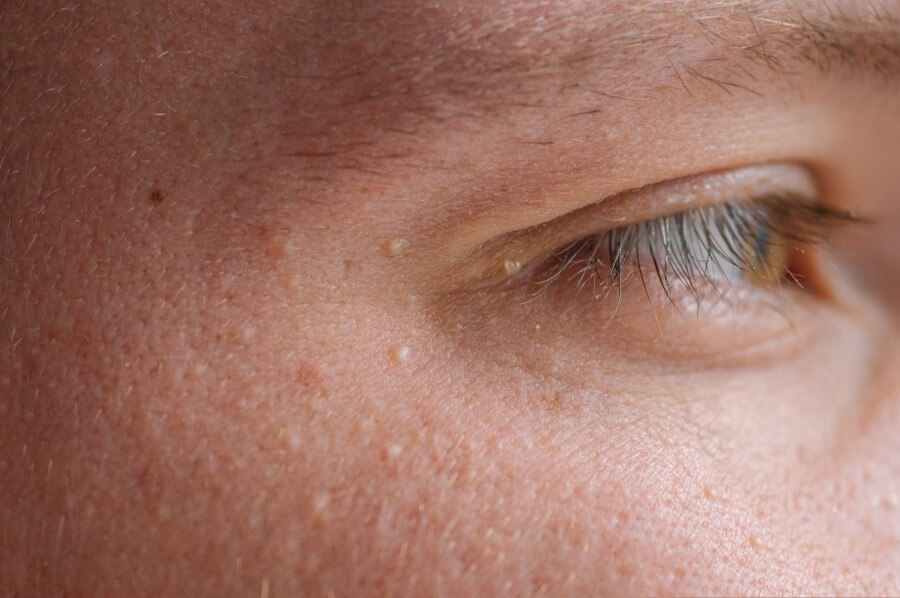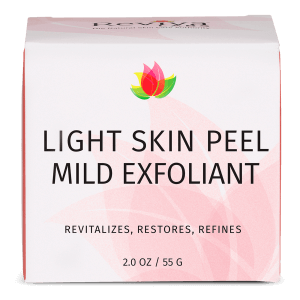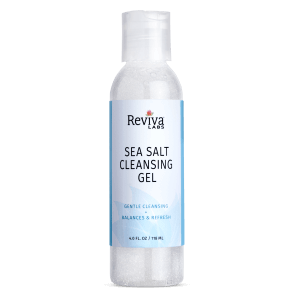Ingredients, Natural, Reviva Labs, Skin Care
What are comedogenic ingredients?
Comedogenic ingredients are a pivotal consideration in the realm of skincare, particularly for those navigating the complexities of acne-prone skin. These ingredients, found in a myriad of skincare and cosmetic products, possess the potential to obstruct pores, setting the stage for acne flare-ups. The concept of comedogenicity is not one-size-fits-all; it varies significantly based on numerous factors such as skin type, ingredient concentration, and the specific formulation of a product. A deeper understanding of comedogenic ingredients enables individuals to make informed choices about their skincare, favoring products that mitigate the risk of acne.
The Essence of Comedogenicity
The term “comedogenicity” is foundational in skincare discussions, especially among those with a tendency toward oily or acne-afflicted skin. Comedogenic ingredients are not inherently detrimental; they fulfill essential functions within formulations, acting as moisturizers or agents to improve product consistency and feel. Yet, for those with certain skin types, these ingredients may provoke adverse reactions, leading to the development of comedones—small, often flesh-toned bumps that predominantly appear on the forehead and chin. This underscores the importance of individual experimentation and patch testing as methods to discern which ingredients harmonize with one’s skin, and which do not.
Spotlight on Common Comedogenic Ingredients
A variety of ingredients have been identified as potentially comedogenic, although individual skin reactions can differ. Here are more insights into some commonly cited culprits:
- Cocoa Butter and Coconut Oil: Celebrated for their hydrating properties, these ingredients can be too rich for oily skin, potentially leading to clogged pores. However, they might serve well in products intended for dry skin areas not prone to acne.
- Wheat Germ Oil and Lanolin: These nutrient-packed emollients are beneficial for dry and aging skin but may pose problems for those susceptible to clogged pores due to their heavy compositions.
- Isopropyl Myristate and Laureth-4: These are often included to enhance the texture and sensory experience of skincare products. However, their propensity for clogging pores necessitates caution for acne-prone skin.
- Surfactants and Heavy Oils: Ingredients like Sodium Lauryl Sulfate, Oleic Acid, and Soybean Oil can exacerbate pore clogging, especially in products not specifically formulated to be non-comedogenic.
- Synthetic Components: Certain dyes, silicones (such as dimethicone), and other synthetic additives might contribute to acne by trapping oil and debris under the skin’s surface. For example, dimethicone is valued for its smoothing effect in primers and moisturizers but may not be suitable for all skin types.
Navigating the World of Comedogenic Ingredients
Identifying and avoiding comedogenic ingredients is a personalized journey. While lists and guidelines provide a starting point, individual experiences offer the most valuable insights. Patch testing new products and observing your skin’s response over time can help determine what is beneficial or detrimental. Consulting with a skincare professional or dermatologist can also offer tailored advice, especially for those struggling to manage acne.
Comprehensive Strategies for Clear Skin
Achieving clear skin amidst concerns about comedogenic ingredients involves a holistic approach:
- Cleansing and Exfoliation: A balanced cleansing routine, complemented by regular exfoliation, can mitigate the accumulation of dead skin cells and excess oil. For exfoliation, the choice between physical scrubs and chemical exfoliants (like AHAs and BHAs) should consider personal skin sensitivity and reaction.
- Mindful Moisturizing: Hydration is crucial, even for oily skin. Lightweight, non-comedogenic moisturizers that hydrate without adding excess oil can support skin health. Look for products boasting non-comedogenic ingredients like hyaluronic acid or squalane.
- Topical Treatments: For persistent concerns, dermatologist-recommended treatments containing active ingredients such as retinoids, benzoyl peroxide, or salicylic acid offer targeted intervention to promote cell turnover and combat bacteria.
- Professional Assistance: Severe or stubborn cases may benefit from dermatological treatments such as facials, chemical peels, or laser therapy, which can offer deeper pore cleansing and rejuvenation.
- Lifestyle and Diet: External skincare is just one piece of the puzzle. Internal factors, including diet, hydration, stress levels, and sleep quality, play integral roles in skin health. Diets rich in antioxidants and omega-3 fatty acids, along with adequate water intake, can support skin from the inside out.
Comedogenic Skincare Management
The journey to understanding and managing comedogenic ingredients is deeply personal and requires a mix of knowledge, experimentation, and patience. By staying informed about the ingredients in your skincare products and being mindful of your skin’s unique responses, you can craft a skincare routine that supports clear, healthy skin. Remember, what works for one person may not work for another, making personal experience and professional guidance invaluable resources in your skincare journey.
Here’s an incomplete list of comedogenic ingredients. Results may vary due to the percentage of an ingredient in a product and your skin’s resiliency.
Very Comedogenic Ingredients:
- Acetylated Lanolin
- Acetylated Lanolin Alcohol
- Algae Extract
- Algin
- Carrageenan
- Cocoa Butter
- Coconut Butter
- Coconut Oil
- Isocetyl Stearate
- Isopropyl Isostearate
- Isopropyl Myristate
- Isopropyl Palmitate
- Laureth 4
- Lauric Acid
- Octyl Palmitate
- Octyl Stearate
- Oleth-3
- PEG 16 Lanolin
- Propylene Glycol Monostearate
- Red Algea
- Sodium Chloride
- Sodium Lauryl Sulfate
- Syearyl Heptanoate
- Wheat Germ Oil
Somewhat Comedogenic Ingredients:
- Almond Oil
- Apricot Kernel Oil
- Ascorbyl Palmitate
- Avocado Oil
- Beeswax
- Benzoic Acid
- Butyl Stearate
- Camphor
- Capric Acid
- Cetearyl Alcohol
- Cetyl Alcohol
- Colloidal Sulfur
- Corn Oil
- D&C Red # 17
- D&C Red # 19
- D&C Red # 21
- D&C Red # 3
- Dioctyl Succinate
- Evening Primrose Oil
- Glyceryl Stearate SE
- Jojoba Oil
- Lanolin Alcohol
- Laureth 23
- Myristic Acid
- Oleth-10
- Olive Oil
- Palmitic Acid
- Peanut Oil
- PEG 75 Lanolin
- PEG 8 Stearate
- Safflower Oil
- Sodium Laureth Sulfate
- Soybean Oil
- Stearic Acid
- Stearyl Alcohol
- Sulfated Castor Oil
- Sulfated Jojoba Oil
- Tocopherol (Vitamin E)
- Vitamin A Palmitate
Slightly Comedogenic Ingredients:
- Beta Carotene
- Butylene Glycol
- Calendula
- Candelilla Wax
- Caprylic Acid
- Carnuba Wax
- D&C Red # 4
- D&C Red # 6
- D&C Red # 7
- D&C Red # 9
- Dimethicone
- Glyceryl Stearate NSE
- Lanolin Oil
- Lanolin Wax
- Lithiumm Stearate
- Magnesium Stearate
- PEG 100 Stearate
- Polyethylene Glycol (PEG 400)
- Simethicone
- Squalene
- Talc
- Zinc Oxide












